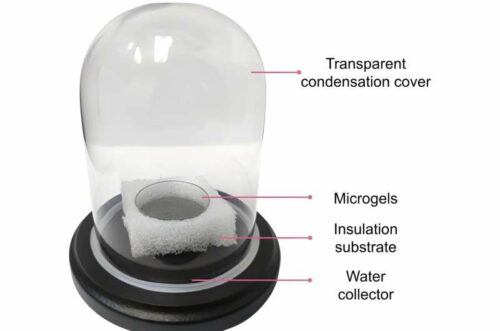- Solar-powered water creation from thin air offers hope in water-scarce regions, revolutionising clean water access.
- To scale up and market a cost-effective, portable solution for global water scarcity.

For years, scientists have explored atmospheric moisture as a potential source of potable water for drought-affected populations. A recent development that could provide a lifeline to regions grappling with water shortages, and is a sustainable solution to the global water crisis. It can extract and purify water from the atmosphere using solar energy, even in scorching conditions as high as 104 degrees Fahrenheit.
The researchers at The University of Texas at Austin unveiled a hydrogel capable of transforming hot air into clean drinking water using only sunlight. The newly unveiled hydrogel, engineered at a molecular level, marks a leap forward in this quest. The potential impact of this innovation is immense, offering hope to areas burdened by intense heat and limited access to clean water. The hydrogel-based device can generate between 3.5 and 7 kilograms of water per kilogram of gel material, depending on humidity levels. The hydrogel’s adaptability to microgels enables rapid and efficient water capture and release. This transformation propels the technology closer to practical application.
Guihua Yu, a materials science and engineering professor at The University of Texas at Austin, highlighted the hydrogel’s extraordinary capabilities: “With our new hydrogel, we’re not just pulling water out of thin air. We’re doing it extremely fast and without consuming too much energy. What’s fascinating about our hydrogel is how it releases water. Think about a hot summer—we could use our temperatures’ natural ups and downs, no need to crank up any heaters.” Researchers can make the water capture and release ultrafast by transforming the hydrogel into micro-sized particles. This offers a new, highly efficient type of sorbent that can significantly enhance water production by multiple daily cycles. Scaling up is the next step, to make this technology accessible to regions in dire need of a reliable source of clean drinking water, such as Ethiopia, where nearly 60% of the population lacks access to safe water.
They have developed this device to be available to people worldwide who need quick and consistent access to clean, drinkable water, particularly in arid areas. The team is exploring the development of organic-based versions of the device to reduce production costs. Overcoming challenges related to scaling production and ensuring product durability are among their key priorities, along with making the device suitable for various applications and scenarios. As the world grapples with increasing water scarcity, this hydrogel technology offers hope for a more sustainable and water-abundant future.






